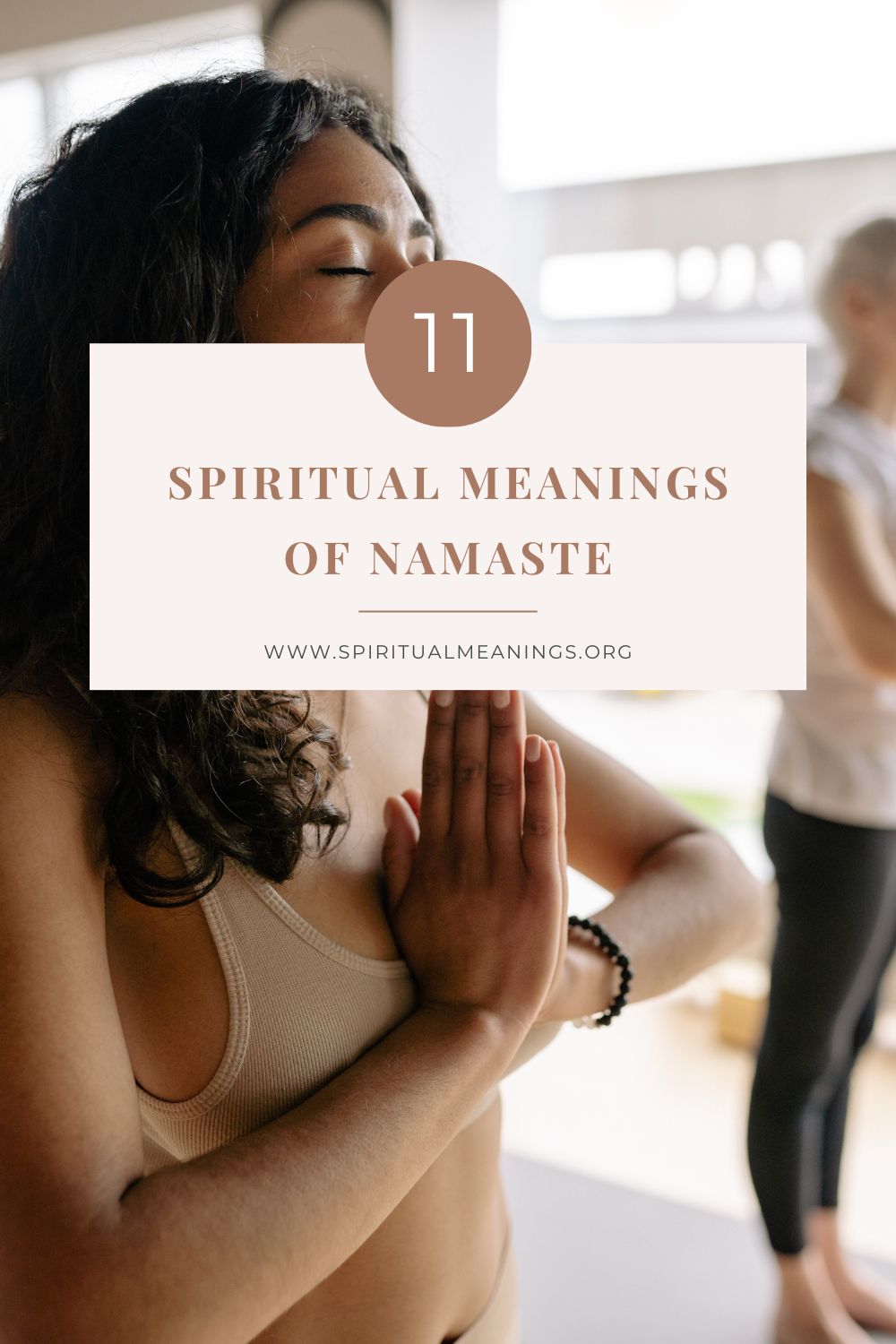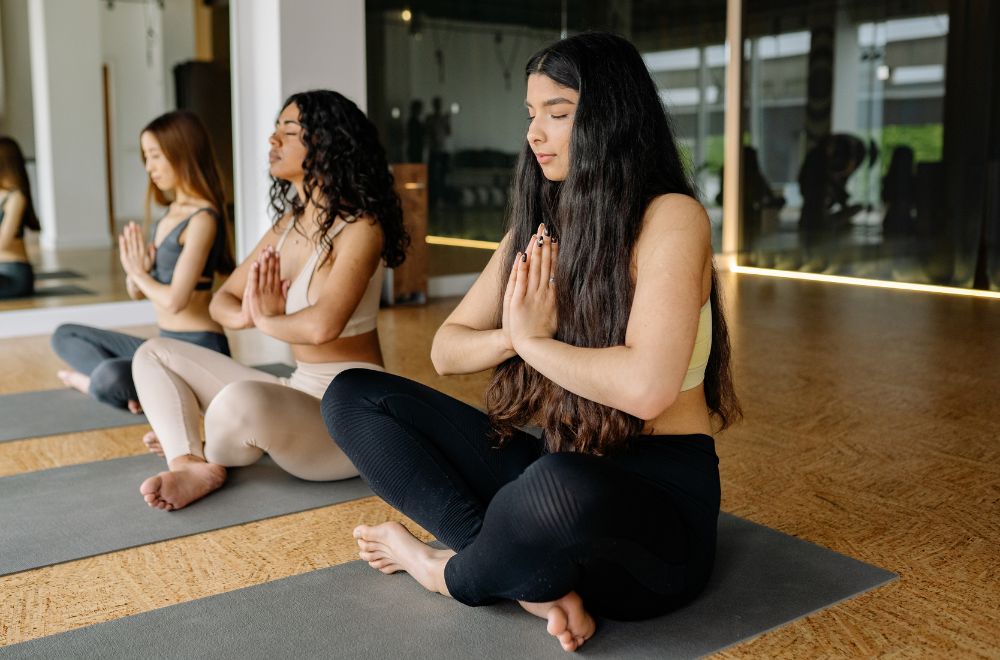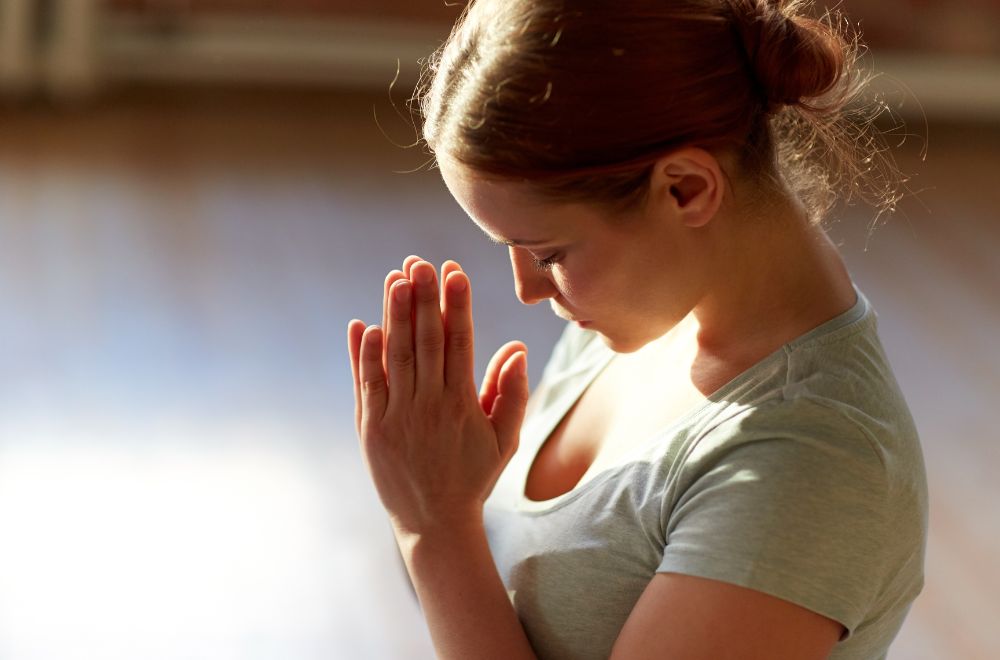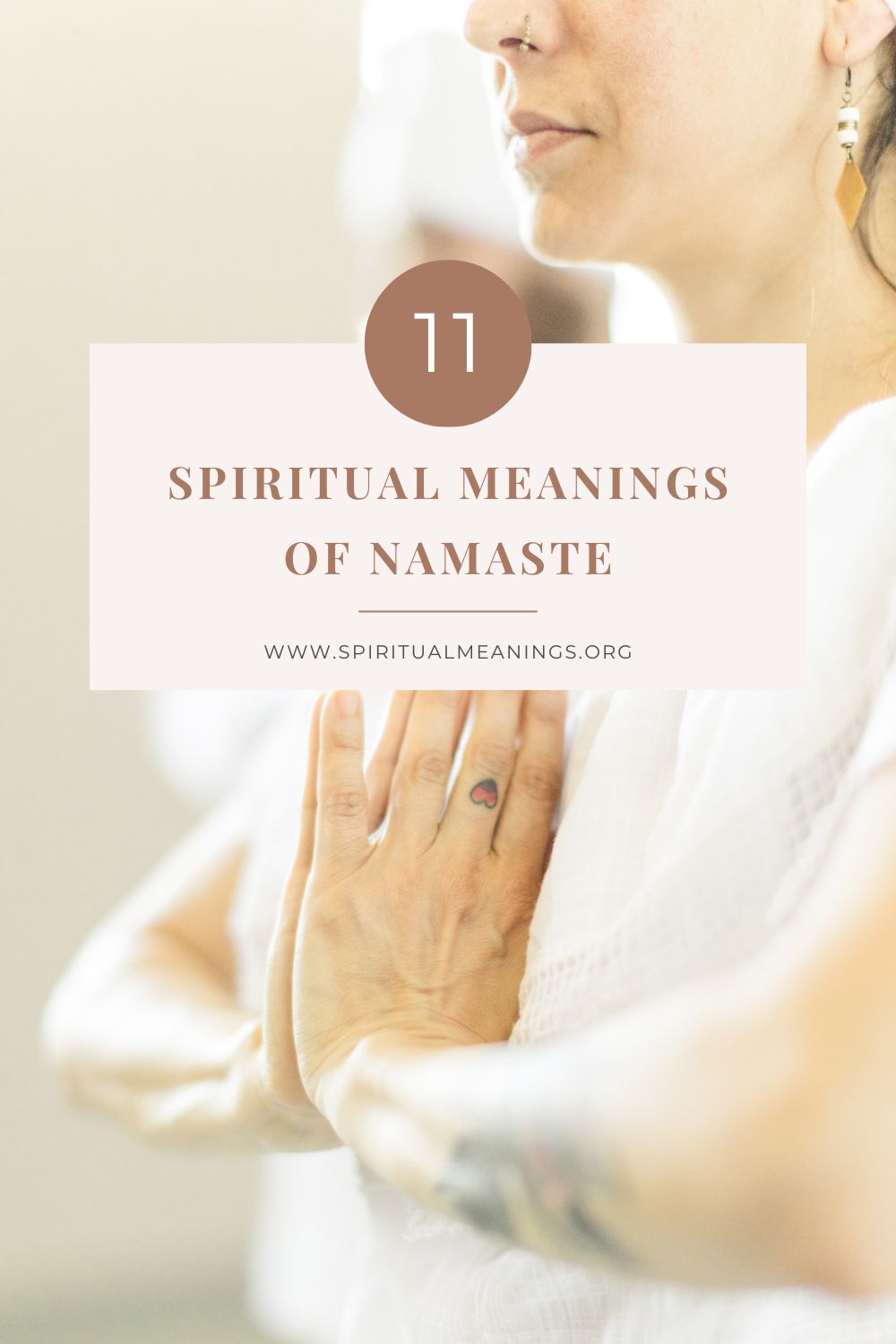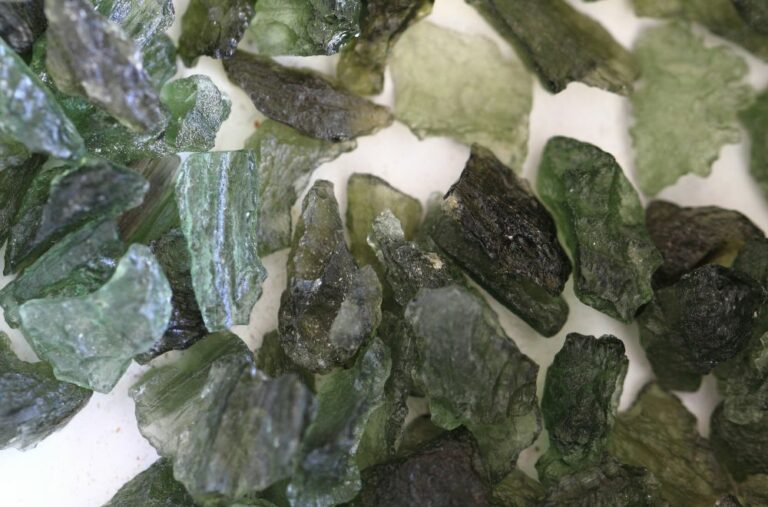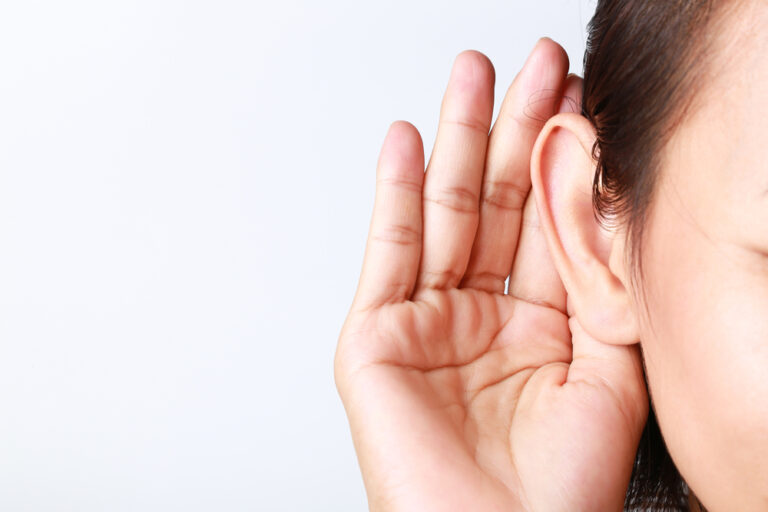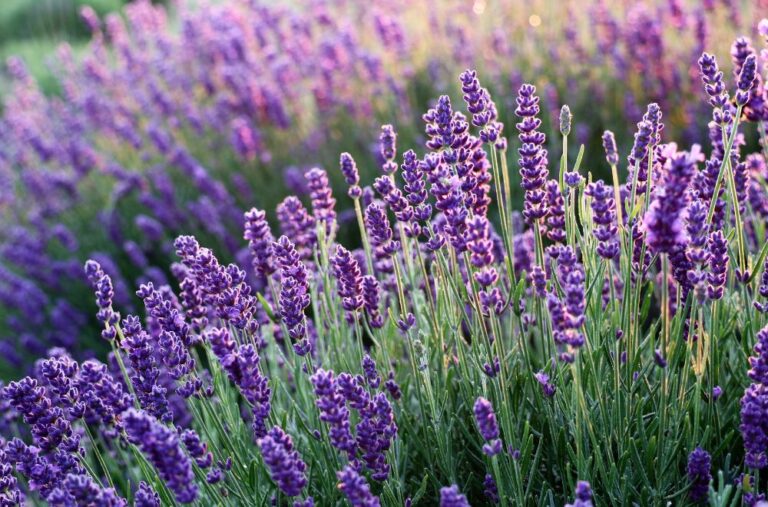Most people who have ever attended a yoga class will have come across the word “namaste”, usually spoken by their yoga teacher at the start and end of each session and echoed back by the students – and anyone who has visited India will also certainly have heard this greeting.
But where does it come from? And what is the deeper significance of this word that seems imbued with mystery and spiritual power?
To answer questions like these and more, in this post, we go into the details of the spiritual meaning of namaste.
Namaste Spiritual Meanings
1. The origins of namaste
Namaste is a word used as a greeting as well as for saying goodbye, and it derives from Sanskrit and the Vedas, the Sanskrit religious texts that constitute the most ancient Hindu scriptures.
Specifically, for example, it is found in the Rig Veda and Atharva Veda which date back to around 1500-1000 BCE – as well as in other later post-Vedic Hindu writings like the Mahabharata.
In these contexts, it variously carries the sense of “worship”, “adore” or “homage” – and these ideas are, to some extent, carried into the modern meaning of the word.
The accompanying gesture of two hands placed with the palms together and level with the chest also appears in ancient artwork in Hindu temples, and this is something we’ll also be talking more about in this post.
2. The etymology of namaste
The word “namaste” is made up of the Sanskrit word namaḥ, which came to mean “bow” or “reverential salutation”, and te, which is a familiar form of “you”. When pronounced together, namaḥ becomes namas, giving namaste.
As a result, a simple translation of namaste could be something like “I bow to you”.
However, some scholars take it a little further.
According to one suggestion, since te is a form reserved for addressing very close adults, children and the divine, this gives namaste an implication that you are speaking to the inner child or inner divinity inherent in the person you are saying it to.
This is one reason why you may see namaste translated as something like “the divine in me bows to the divine in you” or something similar.
3. The gesture and the word
When people say namaste, it is often accompanied by the distinctive hands-together gesture, but it’s important to distinguish between them – you can say namaste without the gesture, and you can equally make the gesture without saying the word.
The gesture is technically known as the Añjali mudrā.
A mudra is a symbolic gesture or pose in Hindu tradition as well as in Jainism and Buddhism – and many Westerners are likely to first meet this term “mudra” in the context of yoga.
This particular gesture indicates greeting and respect, and it is also used in prayer and devotion. When used to accompany namaste, the gesture is performed with the hands held in front of the heart chakra with the thumbs gently touching the chest.
The point to remember is that the word namaste and the Anjali mudra that often accompanies it shouldn’t be considered the same thing.
When saying namaste, it’s not essential to perform the Anjali mudra, although if you do so, it makes the word seem more sincere; however you shouldn’t consider the Anjali mudra as somehow equivalent to or an inseparable part of namaste.
4. Acknowledging the divine in another person
A major element of the spiritual meaning of namaste comes from the Hindu belief that the divine resides in everyone, so when you say namaste, you are saying “the divine in me honors the divine in you”.
In this way, namaste acknowledges the divine residing in the other person and recognizes the universal force or power that unifies and binds us.
At the same time, the word also establishes a spiritual connection between two people using the greeting and performing the Anjali mudra towards one another.
5. Honor and respect
Namaste is also a greeting that expresses honor and respect, so it is one that is commonly used towards people to whom you owe respect such as a teacher or an elder.
This is an inherent aspect of using the word, so as well as establishing a kind of spiritual connection between two people, it also conveys honor and respect.
6. Gratitude
Another use of namaste is to express gratitude to another person for some kind of assistance or generosity.
In a normal situation, in modern Hindi for example, the words shukriyaa or the more formal dhanyavaad are used to say thank you.
However, sometimes namaste can be used perhaps to convey a deeper, more spiritual sense of gratitude – although bear in mind that namaste shouldn’t be seen as a translation for thank you in all contexts because this is not what it means.
7. Welcome
Namaste as a greeting to guests is a greeting that expresses welcome, reflecting the ideal that guests should be treated like gods.
As a result, namaste can be seen as conveying courtesy, welcome and hospitality towards a visitor.
8. Reverence and prayer
As well as a word of greeting towards humans, namaste can also be used as a term of reverence and devotion when “greeting” a god.
In this context, when directing namaste towards a god, it conveys all the same meanings as it would towards a person, namely ideas of honor and respect, gratitude, acknowledgement and more.
9. The Anjali mudra in yoga asanas
As we’ve already noted, the word “namaste” and the Anjali mudra are separate. However, it’s worth saying a few words about the Anjali mudra as it appears in yoga asanas since this is relevant to our topic.
The Anjali mudra is performed as part of a number of yoga asanas – shapes or positions – due to the belief that it can bring several benefits.
It is a centering pose that can help reduce stress and anxiety while increasing focus and being conducive to entering into a meditative state.
It also supposedly helps reduce ego and negative energy while increasing positivity and the flow of divine consciousness.
Asanas that incorporate the Anjali mudra include the Tree pose, the Crescent Moon pose, the Chair pose and some variations of the Warrior pose.
10. “Hello”
Having looked at the deeper spiritual meaning of namaste – something that it undeniably contains – it’s also important to recognize that namaste often doesn’t carry any more spiritual significance than “hello” in English.
Although namaste has its roots in Hindu religious texts, and although etymologically, it has a spiritual meaning, in modern India, when people greet each other with namaste, most of the time, they aren’t thinking about anything other than saying hi.
When we say “good afternoon” in English (or bonjour in French or buenos días in Spanish) we aren’t thinking about wishing someone a good afternoon (or good day) but rather are just saying the words because that’s what we say – and namaste is the same.
As Sarah Regan explores on mindbodygreen, namaste has sometimes been appropriated by yoga teachers and incorporated into their classes as some kind of mystical or spiritual way to start a class.
When yoga teachers initiate their classes with namaste in this way, they might be giving their students the idea that the word has some deep spiritual significance, something that resonates because it sounds exotic, but in reality, all they’re doing is saying hello in a foreign language.
It’s true that in certain contexts – for example, when speaking to someone to whom you want to show respect – namaste can and does have many of the original spiritual connotations we’ve discussed in this post. But in others, it has none.
So in short, while it’s important to understand where the word came from and the spiritual significance it has, you shouldn’t allow yourself to be enchanted or seduced by the perceived exoticism of the word and attribute spiritual meaning to it in contexts where there is none.
11. “Namaste” and the Anjali mudra in other cultures
Finally, it’s also worth mentioning namaste and the Anjali mudra in cultures other than Indian Hinduism since it also appears elsewhere.
Although namaste comes from Sanskrit, it is now considered a Hindi word as well as a Nepali one, and it is widely used in the regions where those languages are spoken.
This means namaste has also become a part of Buddhist and Jain traditions since those religions are also native to the same areas.
Further afield, while the word “namaste” is not used in places like Southeast Asia, a gesture similar to the Anjali mudra, what we can refer to as the “namaste pose”, does occur.
For example, in Thailand, the traditional greeting known as the “wai” involves a slight bow with the hands pressed together in front of the chest or higher. This is a gesture of respect that comes directly from the Indian custom. A similar gesture is also used in Myanmar.
A word that has deep spiritual significance – but that sometimes has none
As we’ve seen, namaste is a greeting that has been used for several thousand years, and it is a word that has had deep spiritual meaning from the beginning.
However, it’s also important to be aware that in modern India, namaste often has little more spiritual meaning than “hello” in English, and this is something you need to be understand before you are tempted to attribute spiritual meaning to the word when none is present.

